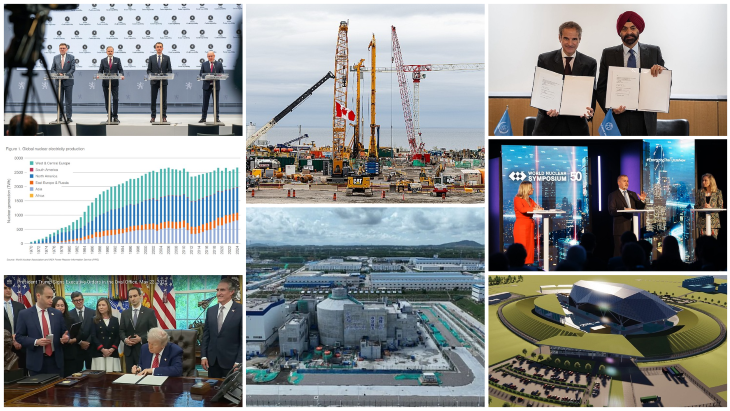As the final removal of the iconic filters at the top of the remaining Windscale chimney draws to a close, the son and grandson of John Cockroft, at whose insistence the filters were built, have taken part in the work.
 |
| John Cockcroft's son Christopher and grandson John at the Sellafield nuclear site (Image: Sellafield Ltd) |
Windscale's two piles - early nuclear reactors - were built to produce plutonium in the early days of the UK's nuclear weapons program. Their two chimneys, with the protruding filter galleries near the top, were a characteristic of the Sellafield skyline for over 50 years.
Locals referred to them as Cockcroft's Follies, but the high-performance filters retrofitted to the two chimneys in the late 1940s would later prevent the UK's most serious nuclear incident from becoming a catastrophe, when a fire broke out in Windscale Pile 1. The filters captured most of the radioactive contamination that would otherwise have been released into the atmosphere.
Both of the plutonium-producing piles were shut down following the 1957 fire. The contaminated filters themselves were removed shortly afterwards, and the chimneys sealed up to allow radiation levels to reduce before decommissioning work could start. The first chimney was reduced to the level of the adjacent reactor building in 2001. The second chimney posed more of a challenge due to radioactive contamination from the fire, and with demolition beginning in 2013.
The decommissioning process has employed a combination of manual and semi-remote tools and techniques, and has involved stripping out thermal insulation lining; taking down the concentrator; dismantling the filter in-fills; and removing four 10 tonne winches that were used to raise and lower the head gear platform inside the chimney on which a remotely operated demolition vehicle was deployed to remove the chimney lining and steel work. Under Sellafield's decommissioning plant, Pile 1 chimney dismantling is slated to continue through the period 2025-2026.
Researched and written
by World Nuclear News






_53514_33880.jpg)






